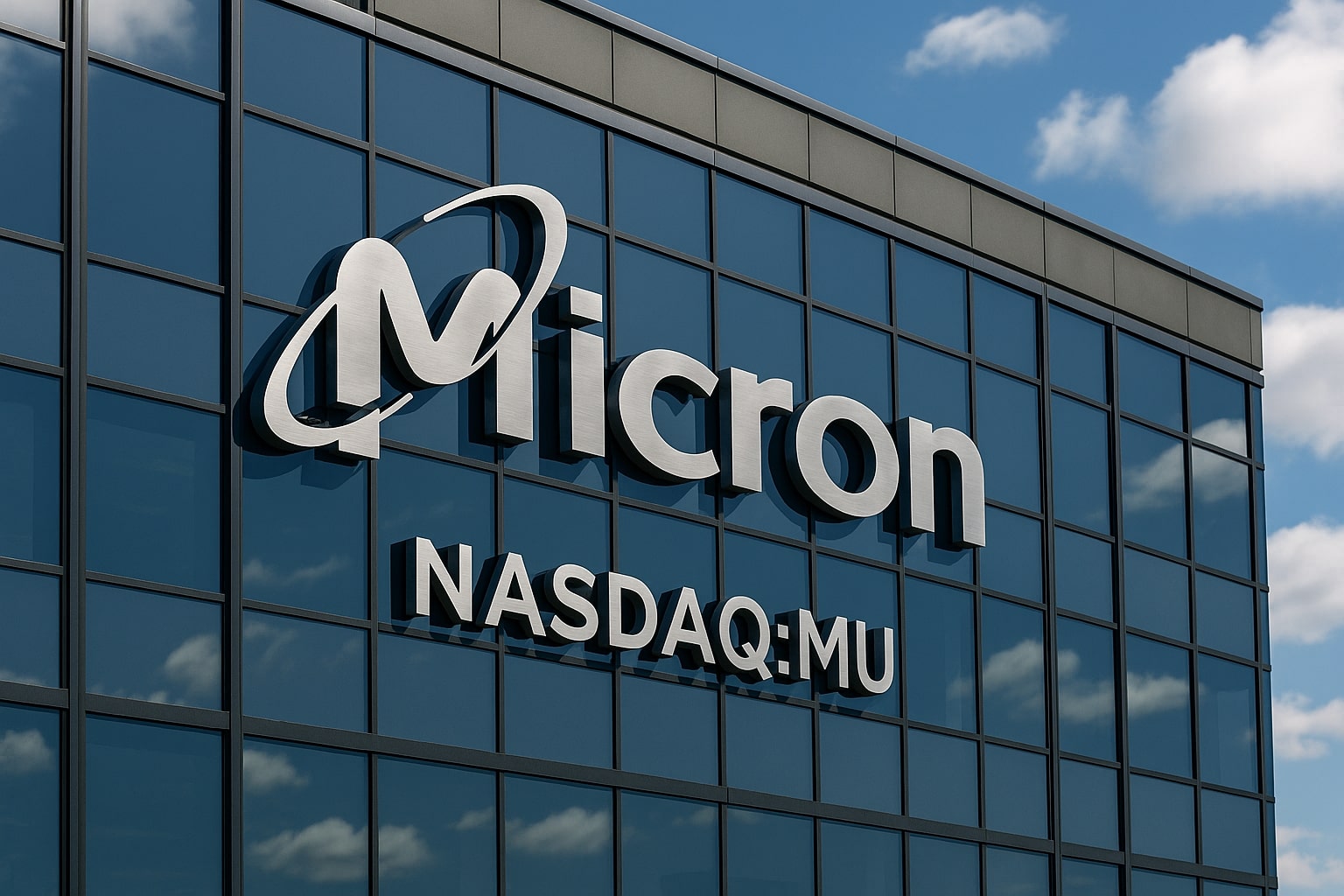NASDAQ:MU Surges on AI-Driven Memory Demand and Upgraded Guidance
Micron Technology (NASDAQ:MU) has turned into one of the standout semiconductor plays of 2025, with shares climbing 4.62% in the latest session to $124.21, closing in on the 52-week peak of $129.85. Investors are re-rating the stock higher on the back of surging demand for high-bandwidth memory (HBM) chips, improved DRAM pricing, and robust financial guidance. Year-to-date, MU has advanced nearly 48%, handily beating the iShares Semiconductor ETF’s 14% return, and extending a three-year run that has seen total shareholder return reach 124.46%. Market capitalization now sits at $139 billion, with valuation multiples expanding but still below some of its peers at 22.4x trailing earnings and 9.0x forward. See real-time chart here.
Guidance Upgrade Reinforces Strength in DRAM and HBM
Micron raised its fiscal Q4 revenue outlook to a range of $11.1 to $11.3 billion, up from the prior $10.4–$11 billion and well ahead of Wall Street’s $10.75 billion consensus. Earnings guidance was also lifted to $2.85 per share at the midpoint, compared with the $2.51 analyst consensus. Management attributed the stronger outlook to improved pricing in DRAM markets and high utilization across HBM capacity. The company has effectively sold out its HBM production into the end of 2025, supported by AI data center build-outs from clients such as Nvidia, Microsoft, and Meta.
Quarterly numbers underline the acceleration: revenue for the May quarter hit $9.3 billion, generating $2.18 billion in net income and EPS of $1.91, a significant beat versus estimates of $1.59. Year-over-year, sales surged 43%, while EPS grew 142%. The scale of improvement from last year’s $6.81 billion revenue and $332 million net income is notable, underscoring how quickly industry conditions have turned.
Financial Profile and Balance Sheet Stability
Trailing twelve-month revenue has expanded to $33.8 billion with net income of $6.2 billion and EPS of $5.54. Profit margin sits at 18.4% with operating margin at 23.3%, reflecting Micron’s ability to maintain profitability through pricing cycles. Cash reserves total $10.8 billion against $16.2 billion in debt, keeping debt-to-equity manageable at 31.9%. Levered free cash flow of $1.2 billion indicates room for dividend coverage, with MU paying out $0.46 annually at a 0.39% yield. Analysts expect EPS of $8.08 this fiscal year and a dramatic ramp to $12.80 in 2026 as DRAM and HBM demand scale further.
Valuation Compared to Peers
At $124 per share, MU trades at 3.98x price-to-sales and 2.62x book value, well below premium multiples given to rivals like Broadcom (AVGO) and Nvidia (NVDA). The PEG ratio of just 0.13 reflects market skepticism that current growth can be sustained, but if EPS growth projections of 58% in 2026 materialize, the stock’s valuation rerating could accelerate. Analysts’ average price target sits at $150.57 with a high estimate of $200, leaving upside potential of 21–60% depending on execution.
Insider Activity and Institutional Flows
Institutional investors remain firmly behind MU, holding more than 84% of shares. However, insider sentiment has tilted negative in recent months, with executives trimming exposure. In July 2025, EVP of Global Operations Manish Bhatia sold 80,000 shares worth $9.85 million. Track insider transactions here. With short interest at just 2.85% of float, bearish positioning remains modest, suggesting confidence in the stock’s momentum.
Industry Dynamics and AI Tailwinds
The broader memory industry rebounded sharply from the historic downturn of 2022–2023. By 2024, global memory revenue reached a record $170 billion, with HBM alone expected to nearly double in 2025 to $34 billion. Micron’s competitive positioning in HBM3E and next-generation HBM4 has secured contracts across hyperscalers and AI hardware vendors, directly tying the company to the AI infrastructure boom. At SEMICON India 2025, management confirmed that capacity is effectively sold out, underscoring supply tightness that supports pricing discipline.
Wall Street Sentiment and Price Targets
Brokerage activity has been intense. Wedbush boosted its MU price target to $150, citing stronger-than-expected DRAM/NAND pricing cycles and HBM growth. Rosenblatt reiterated a Buy with a $200 target, while Cantor Fitzgerald and UBS each maintained Overweight ratings at $155. Goldman Sachs, by contrast, remains Neutral with a $130 target, warning about cyclical risks in DRAM pricing through 2026. CLSA recently initiated coverage at Outperform, highlighting MU’s opportunity to consolidate HBM leadership.
Domestic Expansion and Strategic Importance
CEO Sanjay Mehrotra has emphasized Micron’s commitment to U.S. manufacturing. The company plans $150 billion in domestic capacity investment and $50 billion in R&D, backed by federal incentives, potentially creating 90,000 jobs. This U.S.-centric strategy comes as Washington tightens restrictions on memory exports to China, reinforcing Micron’s role as a secure domestic supplier for AI infrastructure.



















